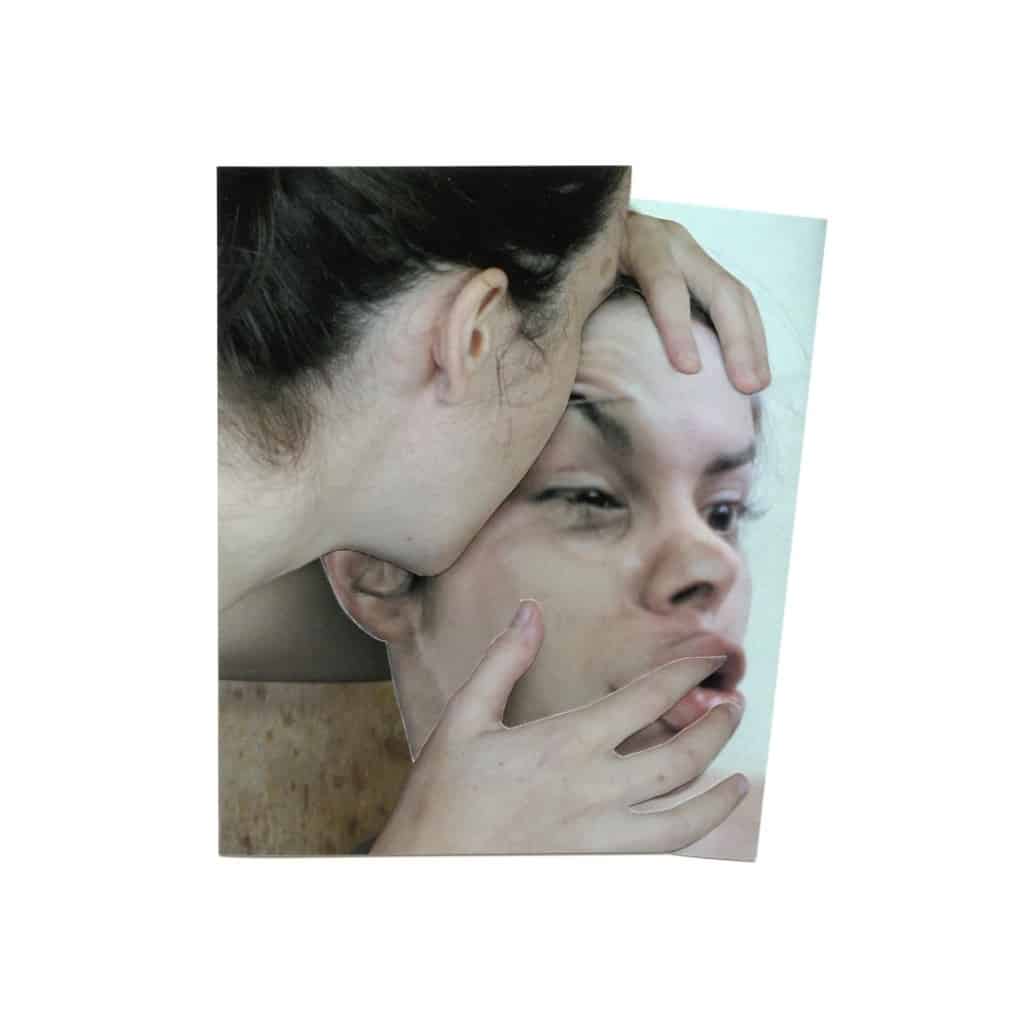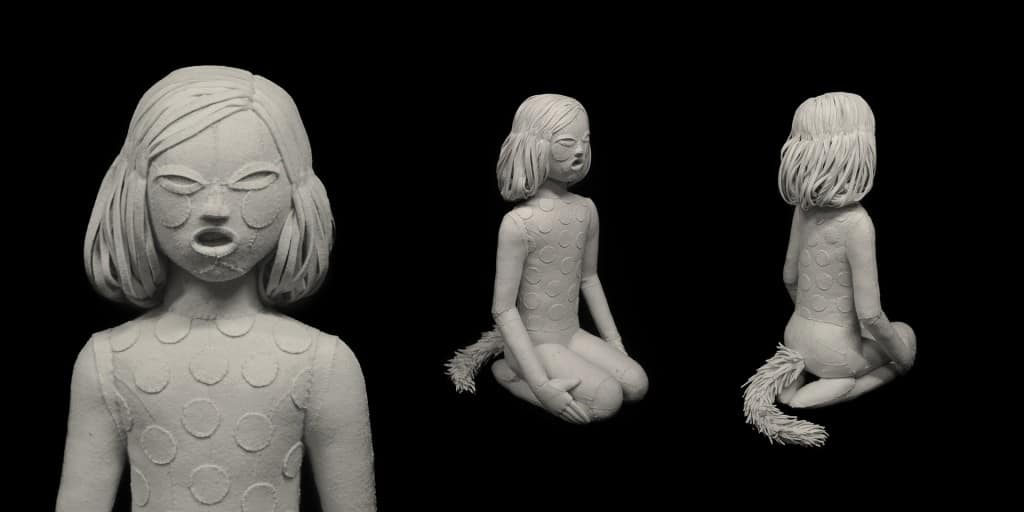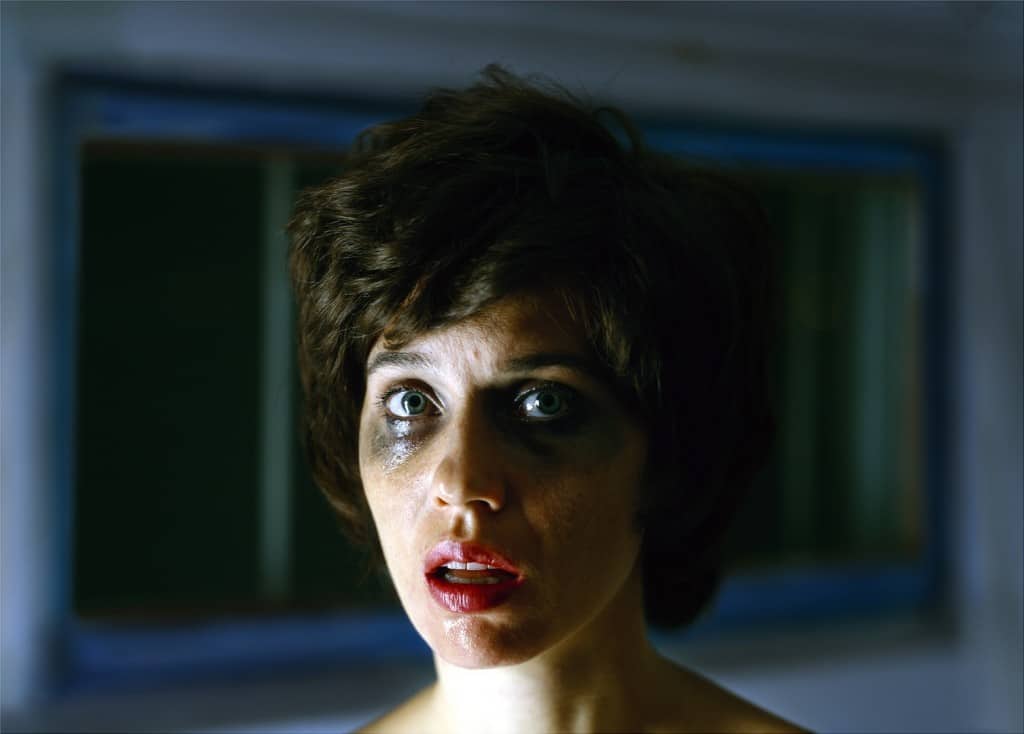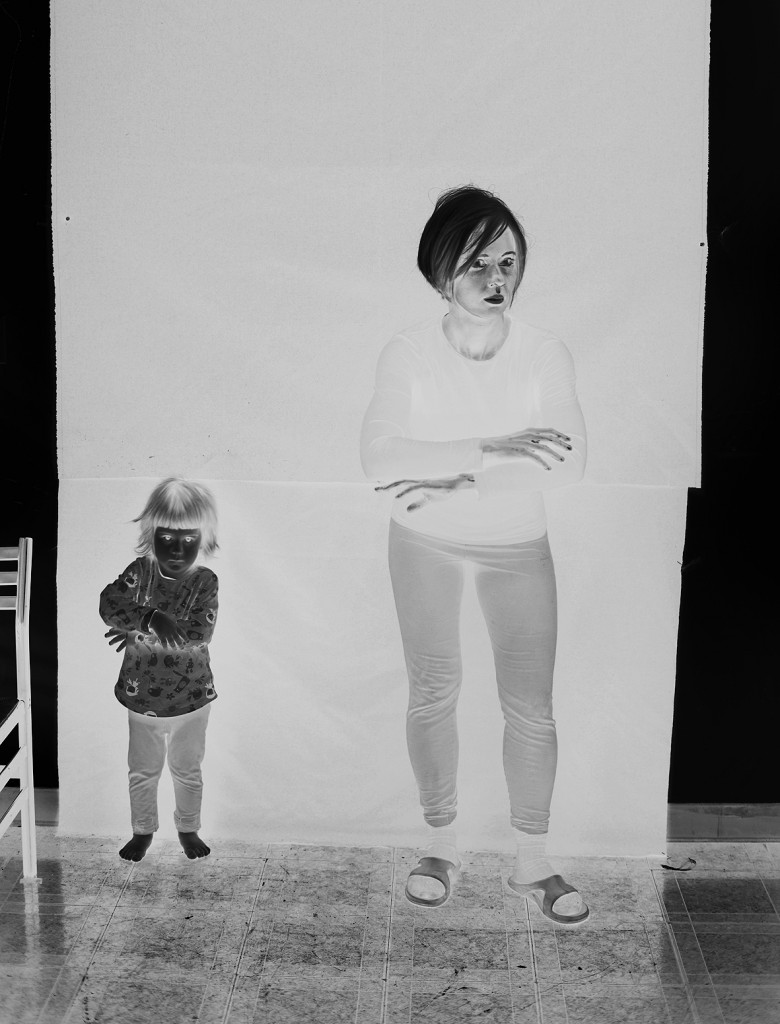An immensely talented artist, Aneta Grzeszykowska, takes photographs, shoots films and creates objects. Her body is her medium. She says: “My body and surroundings play a major role in my work for technical reasons – these are easily accessible and ample components of creation. My work is deeply rooted in the mundane reality. The questions I ask are addressed to me.”

Aneta Grzeszykowska, Selfie#6, 2014, photo courtesy the artist
Separate yet complementary works – Album, Untitled Film Stills, Negative Book and Selfie – tackle the subject of the artist’s identity. The Album project (2005) traces Grzeszykowska’s life from the moment she was born until the project came about by putting together her family pictures. However, she decided to erase herself. Grzeszykowska toys with audience members who look for her in vain, who can only speculate about her place in the picture. Untitled Film Stills refers to the project made by Cindy Sherman in the 1970s who disguised herself as film characters, entered the real world and situations typical for the post-war America. In the series of seventy colour photographs, Grzeszykowska recreates the setting. However, outdated props are replaced with modern items which reflect how much time has passed. What is more, black-and-white photographs entitled Negative Book capture the scenes from the artist’s own life. The negatives feature Grzeszykowska’s silhouette as a bright area, reversing the usual effect. As a result, she escapes our reality and conjures up her own. The most recent project called Selfie marks a radical change of direction for Grzeszykowska. The photographs illustrate stages of her portrait creation out of animal skin. The process reflects the struggle with mortality and attempts to preserve our own identity amid the transient nature of all human pursuits. According to Aneta Grzeszykowska, “the identity should be viewed in this case as both tangible presence and emotional experience. All my photographs are interconnected. Album, Untitled Film Stills, Negative Book and Selfie represent the phases of losing oneself. I deleted myself in Album, I tried to be someone else in Untitled Film Stills and myself again in Negative Book. Something else tries to be me in Selfie.” Interestingly enough, the artist deals with identity and still admits what follows: “In fact, I don’t believe in the existence of identity as such. A person’s past is the collection of their previous versions. They evolve and realize the need for clearly defined identity not until they are actually dying. You could say art documents things, records this process and thus influences the creative one.”

Aneta Grzeszykowska, Love Book, 2010, photo courtesy the artist
Another project called Love Book is composed of eighteen collages expressing a clear feminist message. The artist’s image is combined with the fragments of works created by the representatives of feminist art movement who also used body as a medium. The pieces imitate homosexual intercourse, which is sometimes tender and sometimes rough.
Franciszka is another fascinating project of Grzeszykowska who decided to make white dolls representing the future self of her daughter. The work is still in progress since Grzeszykowska intends to attach a picture of her daughter as she reaches certain age to the particular doll, no matter how unrealistic this doll seems. The project corresponds well with the earlier series of hand-made black dolls, which illustrated to her own childhood.

Aneta Grzeszykowska, Franciszka, 2013, photo courtesy the artist

Aneta Grzeszykowska, Alina, 2009, photo courtesy the artist
The films made by Aneta Grzeszykowska, such as Black, Headache, Bolimorfia and A Clock, are also worth mentioning. Their common denominator is black background that seems particularly vivid when juxtaposed with a pale female body. Black is a stop-motion animation featuring the naked artist floating in the darkness that sometimes envelops her figure. It is the story of a bottomless abyss. Headache shows a body with self-destructive tendencies. We listen to music by Krzysztof Penderecki playing in the background and witness the journey of body parts that seem as if they wished to be reattached. Bolimorfia uses Bolero by Ravel and presents the multiplying figure of the artist. A viewer observes the process that ultimately gives rise to “a new organism”. Additionally, Ravel’s piece is enhanced by Penderecki’s Polymorphia, which skews its original reception. Whereas, A Clock is the film with a 12-hour running time that shows the multiplication of Grzeszykowska’s figure. The choreography shifts every hour and the number of figures on screen keep growing with time.
Iranian Film Stills is the most recent work of Grzeszykowska. The series of photographs records her stay in Iran in March, 2015. The pictures tell the story of her journey that gains the universal aspect due to the blurred distinction between an obligatory outfit and a disguise. The reference to the iconic style of Cindy Sherman’s work manifests itself in the photographs that capture every-day life in the Islamic Republic and have the feel of neorealist cinema of the 1960s.
Aneta Grzeszykowska is an acclaimed artist well-known around the world. Her works of art are held in the collections of many museums, such as the Guggenheim in New York, the Museum of Modern Art in San Francisco and the Fotomuseum Winterthur in Swirtzerland.

Aneta Grzeszykowska, Untitled film stills #30, 2008, photo courtesy the artist

Aneta Grzeszykowska, Negative Book #25, 2012-2013, photo courtesy the artist

Aneta Grzeszykowska, Headache, 2008, photo courtesy the artist

Aneta Grzeszykowska, Album, detail, 2005, photo courtesy the artist

Aneta Grzeszykowska, Iranian Film Stills, 2015, photo courtesy the artist

Aneta Grzeszykowska, Iranian Film Stills, 2015, photo courtesy the artist







